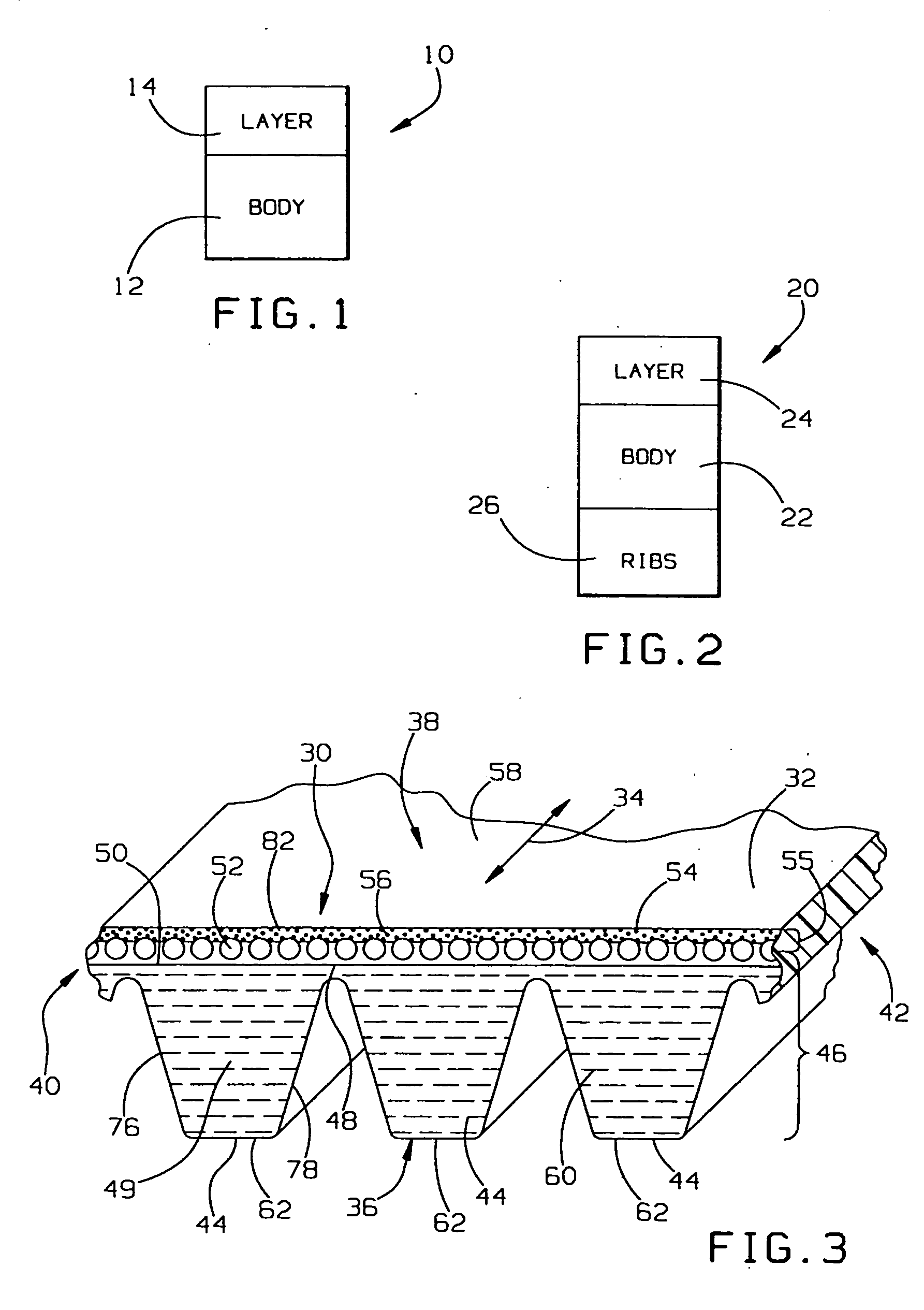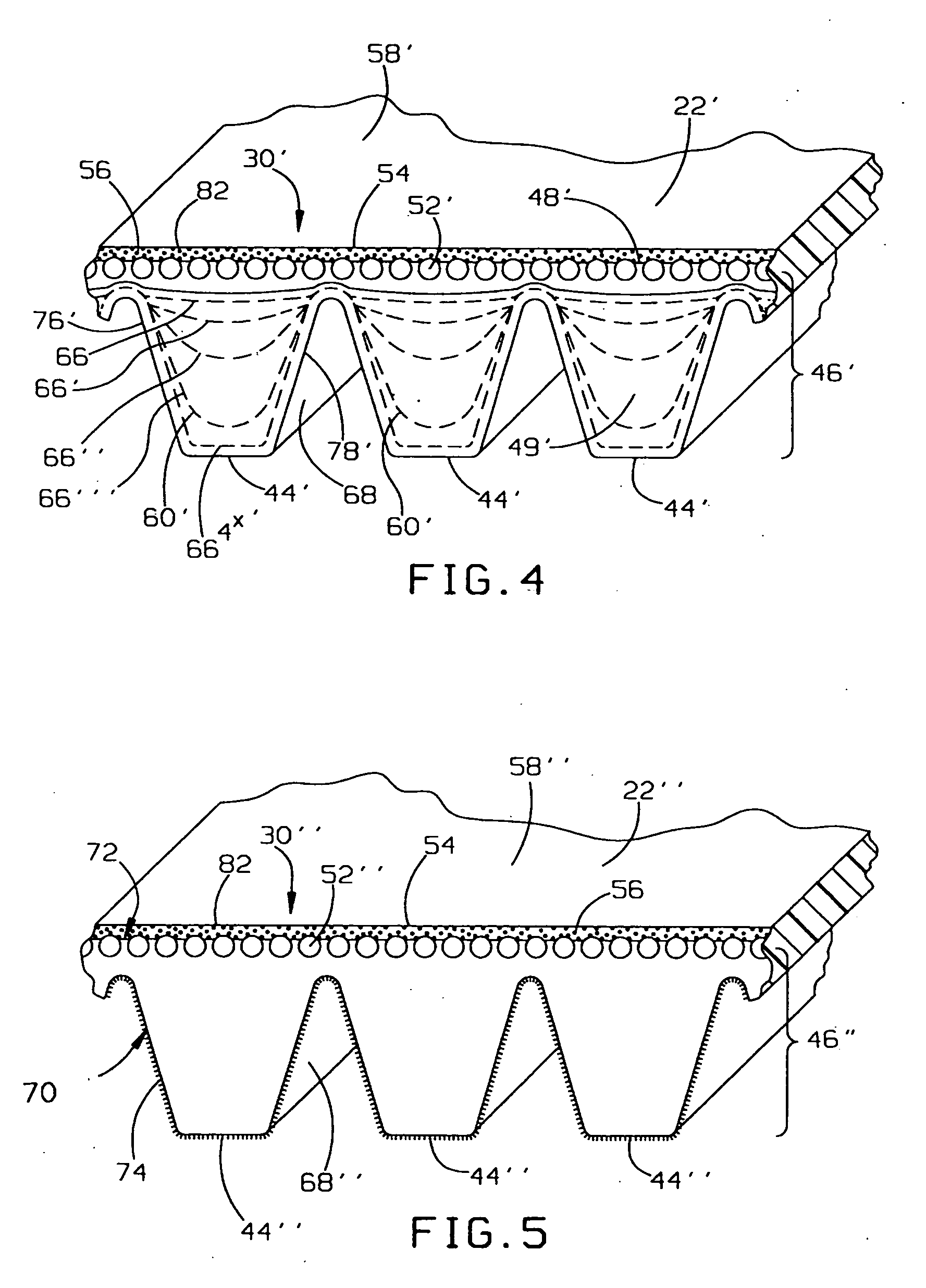Power transmission belt and method of forming a power transmission belt
a technology of power transmission belt and transmission belt, which is applied in the direction of driving belt, belt/chain/gearing, v-belt, etc., can solve the problems of noise generation, noise generation, and local concentration of warp and weft components,
- Summary
- Abstract
- Description
- Claims
- Application Information
AI Technical Summary
Benefits of technology
Problems solved by technology
Method used
Image
Examples
Embodiment Construction
and Comparative Examples 1 and 2, a direction parallel to a rolling direction is referred to as MD and a direction perpendicular to the rolling direction is referred to as CMD.
[0109] In the Examples, orientation of the short fibers in the rubber sheets was observed. A rubber sheet using a nylon cut fiber showed an orientation parallel to a rolling direction, while a rubber sheet using a nylon milled fiber showed a random orientation (see Table 2).
[0110] In this embodiment, a V-ribbed belt was manufactured in which the load carrying cord was made from polyester fiber ropes embedded in a cushion rubber layer. The outside layer was arranged thereon. A compression layer having ribs extending in a longitudinal direction was arranged inside the cushion rubber layer. In manufacturing this V-ribbed belt, the outside layer was initially wrapped around a flat cylindrical mold, followed by wrapping of the cushion rubber layer / sheet and the load carrying cord. After wrapping a layer defining t...
PUM
 Login to View More
Login to View More Abstract
Description
Claims
Application Information
 Login to View More
Login to View More - Generate Ideas
- Intellectual Property
- Life Sciences
- Materials
- Tech Scout
- Unparalleled Data Quality
- Higher Quality Content
- 60% Fewer Hallucinations
Browse by: Latest US Patents, China's latest patents, Technical Efficacy Thesaurus, Application Domain, Technology Topic, Popular Technical Reports.
© 2025 PatSnap. All rights reserved.Legal|Privacy policy|Modern Slavery Act Transparency Statement|Sitemap|About US| Contact US: help@patsnap.com



